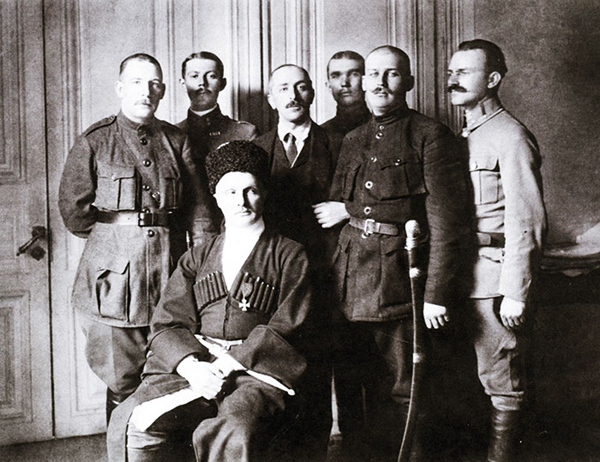Hetman government
Hetman government. The antisocialist Ukrainian government formed after the coup d'état of Gen Pavlo Skoropadsky in Kyiv on 29 April 1918, during which the congress of the conservative All-Ukrainian Union of Landowners proclaimed Skoropadsky hetman of Ukraine. This coup was backed by the generals of the German and Austrian armies that occupied Ukraine after the Peace Treaty of Brest-Litovsk and by former tsarist officers.
On the day of the coup Skoropadsky issued two edicts—Manifesto to the Entire Ukrainian Nation and Laws Concerning the Provisional State System of Ukraine—that together constituted a provisional constitution for the new regime. The Central Rada and the Council of National Ministers of the Ukrainian National Republic and their laws and land reforms were abolished, and the right of private land ownership was reinstated. All legislative and executive powers were transferred to the hetman, who at the same time was proclaimed commander in chief of the military. The edicts created a Council of Ministers with executive and legislative functions, to be appointed by the hetman and to be responsible solely to him. Although decrees and orders of the hetman were to be countersigned by the prime minister or another appropriate minister, the hetman was to ratify all decisions of the council, thus reinforcing his dictatorial power. Civil rights were to be guaranteed ‘within the limits of the law’ (ie, newspapers were strictly censored or shut down, and most public gatherings and strikes were banned), and a supreme court was to be created, with the hetman retaining the authority to commute sentences. The name of the Ukrainian National Republic was changed to the Ukrainian State.
Skoropadsky appointed Mykola Ustymovych and, after he failed, Mykola Vasylenko to form a government from representatives of moderate Ukrainian parties, particularly the Ukrainian Party of Socialists-Federalists (UPSF). Neither succeeded because of a boycott of the undemocratic regime by the major Ukrainian political parties, including the UPSF. Nonetheless, a Council of Ministers was formed on 10 May with the following ministers (many of them Russophile): premier and minister of internal affairs, Fedir Lyzohub; external affairs, Dmytro Doroshenko; army, Aleksandr Rogoza; finance, Antin Rzhepetsky; trade, S. Gutnik; land affairs, Vasilii Kolokoltsov; food provisions, Yurii Sokolovsky; cults, Vasilii Zenkovsky; national health, Vsevolod Liubynsky; education, Vasylenko; communication, B. Butenko; justice, Mykhailo Chubynsky; labor, Yu. Vagner; state controller, Yurii Afanasev; and state secretary, Ihor Kistiakovsky. During the summer some changes were made in the Council of Ministers. Sergei Gerbel became minister of food provisions; A. Romanov, minister of justice; Kistiakovsky, minister of internal affairs; and S. Zavadsky, state secretary. The ministries that existed during the Ukrainian National Republic were reorganized; most deputy ministers were replaced, although the majority of officials from the previous government remained. Local administration was entrusted to gubernial and county starostas (see Gubernial commissioners) appointed by the hetman.
Although its social and economic policies were a failure, the Hetman government did achieve certain successes in diplomacy in establishing a consular service and, particularly, in education and culture. It normalized diplomatic relations with the Central Powers and several neutral countries, strengthened relations with the Kuban, the Don region, and Crimea, and was even formally recognized by Soviet Russia, with which it signed a preliminary peace treaty on 12 June 1918. The government established the Ukrainian state universities of Kyiv (see Kyiv University) and Kamianets-Podilskyi (see Kamianets-Podilskyi Ukrainian State University); chairs of Ukrainian philology and history at other Ukrainian universities; the Ukrainian Academy of Sciences, a national library (today the National Library of Ukraine), state archives, the State Drama Theater, a state museum, and a state music and drama institute in Kyiv; it also opened or Ukrainianized over 150 gymnasiums and made the teaching of Ukrainian language, history, and geography compulsory in Russian schools. Despite German hindrances, it made strides in the organization of an effective military force (see Army of the Ukrainian National Republic); many of its senior officers were, however, pro-White Russians and hostile to the Ukrainian cause.
From the very beginning, the Hetman regime was opposed by most Ukrainian organizations (see, eg, the All-Ukrainian Union of Zemstvos). Ukrainian nationalists criticized it for the following reasons: its pro-Russian orientation; its reliance on Russians, including individuals closely identified with the tsarist regime and members of the Constitutional Democratic (kadet) party and the Octobrist party, to staff important positions in the government and military; its indifference to Ukrainianization of the government and to Ukrainian autonomy; and its reliance on the German army (see Germany), which oppressed the population and exploited Ukraine economically. Socialists, meanwhile, criticized its reactionary policies, particularly its repressiveness, condoning of the landlords' terrorization of the peasantry, and unwillingness to effect comprehensive land reforms, as well as its support by the Russian capitalist Union of Industry, Trade, Finance, and Agriculture. The peasants reacted to the regime's excesses with numerous rebellions and guerrilla warfare (eg, that directed by Nestor Makhno and Yurii Tiutiunnyk), arson, and assassinations (eg, of Hermann von Eichhorn). Soon after the coup, representatives of various Ukrainian parties, unions, and civic-cultural associations formed the Ukrainian National-State Union, later renamed the Ukrainian National Union, to co-ordinate opposition to the Hetman government and revive Ukrainian democracy and independence.
The imminent defeat of the Central Powers, the deteriorating domestic situation, and the Bolshevik consolidation of power in Russia led to a series of political crises in the fall of 1918. Six members of the cabinet, led by Dmytro Doroshenko, increased their efforts to Ukrainianize the regime, which included terminating German overlordship and seeking international recognition of an independent Ukrainian state. This effort was opposed by the other 10 ministers, who published a memorandum advocating the federation of Ukraine with a non-Bolshevik Russia, and stating that Ukraine's most important role was as a base of operations against the Bolsheviks. The ministers also hoped that this policy would find favor among the Entente Powers, which supported the re-establishment of a united Russia.
At this time Skoropadsky began serious negotiations with the expanded Ukrainian National Union (UNU) to broaden his base of support. The UNU demanded eight ministerial portfolios, the convocation of a diet, political amnesty, and the end of censorship and restrictions on freedom of speech. Although a consensus was not reached, five members of the UNU belonging to the Ukrainian Party of Socialists-Federalists agreed to participate in the Council of Ministers. In the manifesto of 22 October, the hetman proclaimed his support of the principle of an independent Ukrainian state and promised to accelerate agrarian reforms and the convocation of a diet. On 24 October a new cabinet, representing a compromise between Ukrainian nationalist and pro-Russian forces, was formed: Fedir Lyzohub, premier; Dmytro Doroshenko, external affairs; Aleksandr Rogoza, military affairs; V. Reinbot, internal affairs (acting); Antin Rzhepetsky, finance; Oleksander Lototsky (UNU), religious affairs; Petro Stebnytsky (UNU), education; Volodymyr M. Leontovych (UNU), agriculture; Sergei Gerbel, food provisions; Andrii Viazlov (UNU), justice; Maksym Slavinsky (UNU), labor; Sergei Mering, trade and industry; B. Butenko, communications; Vsevolod Liubynsky, health; S. Petrov, state controller; and S. Zavadsky, state secretary.
The final capitulation of the Central Powers (11 November 1918) and the withdrawal of their armies, the mainstay of the hetman's authority, led to a dramatic change of policy. Hoping to please the victorious Entente nations, Skoropadsky proclaimed, in his manifesto of 14 November, his intention to federate with a non-Bolshevik Russian state. At the same time he formed a new cabinet, composed mostly of Russian monarchists: premier and minister of agriculture, Sergei Gerbel; external affairs, Yurii Afanasev; army, D. Shchutsky; navy, Andrii Pokrovsky; internal affairs, Ihor Kistiakovsky; education, Volodymyr Naumenko; religious affairs, Mykhailo Voronovych; finance, Antin Rzhepetsky; communication, V. Liandeberg; trade, Sergei Mering; justice, V. Reinbot; health, Vsevolod Liubynsky; labor, Volodymyr Kosynsky; food provisions, G. Glinka; and state controller, S. Petrov.
These developments triggered the popular uprising co-ordinated by the Ukrainian National Union. It had been prepared long in advance with the support of the Sich Riflemen, who had defeated the hetman's forces at Motovylivka on 18 October and had begun advancing on Kyiv. On 14 December 1918, after German troops abandoned Kyiv, Skoropadsky abdicated and fled to Germany, and the Council of Ministers surrendered power to the Directory of the Ukrainian National Republic. Some of Skoropadsky's ministers were later arrested by the new republican government.
BIBLIOGRAPHY
Khrystiuk, P. Zamitky i materiialy do istoriï ukraïns’koï revoliutsiï 1917–1920 rr., 3 (Vienna 1921; New York 1969)
Doroshenko, D. Istoriia Ukraïny 1917–1923 rr., 2: Ukraïns’ka Het’mans’ka Derzhava 1918 roku (Uzhhorod 1930; New York 1954)
Dolenga, S. Skoropadshchyna (Warsaw 1934)
Reshetar, J. The Ukrainian Revolution, 1917–1920: A Study in Revolution (Princeton 1952; New York 1972)
Shapoval, M. Het’manshchyna i Dyrektoriia: Spohady (New York 1958)
Skliarenko, Ye. Borot’ba trudiashchykh Ukraïny proty nimets’ko-avstriis’kykh okupantiv i Het’manshchyna v 1918 rotsi (Kyiv 1960)
Fedyshyn, O. Germany's Drive to the East and the Ukrainian Revolution, 1917–1918 (New Brunswick, NJ 1971)
Hunczak, T. (ed). The Ukraine, 1917–1921: A Study in Revolution (Cambridge, Mass 1977)
Skoropads’kyi, P. Spohady: Kinets’ 1917–hruden’ 1918 (Kyiv 1995)
Soldatenko, V. Ukraïns’ka revoliutsiia: Kontseptsiia ta istoriohrafiia (Kyiv 1997)
B. Balan, O. Shulhyn, A. Zhukovsky
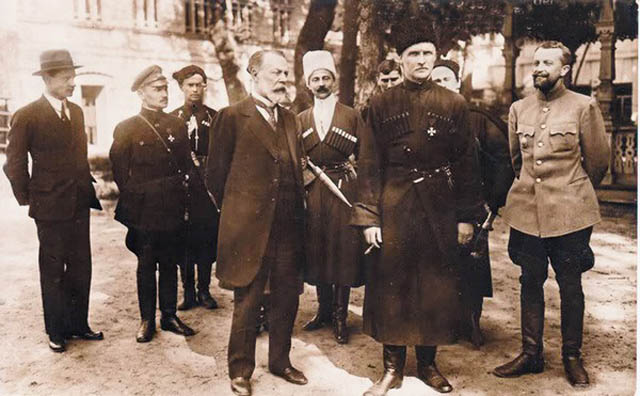
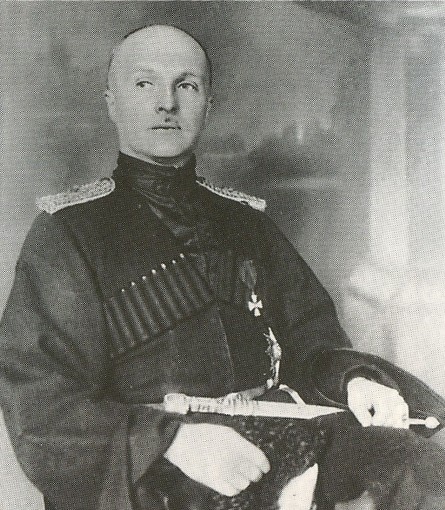
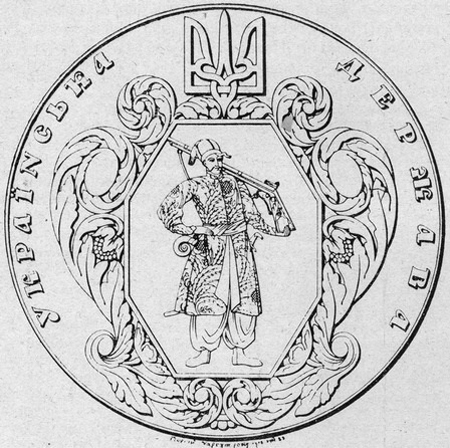
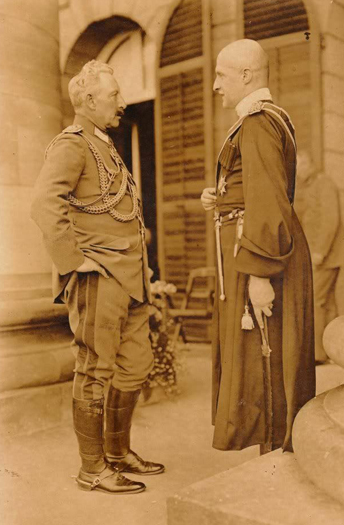
.jpg)
